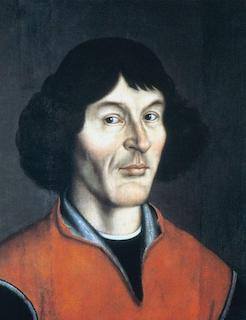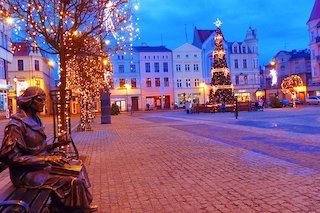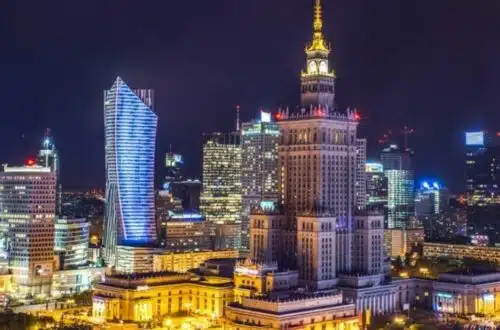Interesting Facts About Nicolaus Copernicus
Imagine a world where the earth is static. Many believed that the heavenly bodies, including the sun orbit the earth until Nicolaus Copernicus changed the narrative. This was clearly stated in his book, On the Revolutions of the Heavenly Spheres, a publication that not only shook the Earth and made people see the universe from a different perspective but also made the Earth lose its privileged position.
But first, who was Copernicus?
Who Was Copernicus?
Nicolaus Copernicus was a man whose legacy is still celebrated today. Right in the heart of Warsaw is an enormous statue of Copernicus sitting on a pedestal greeting, looking at the bronze model of his solar system.
Born in 1473, Copernicus was raised by his uncle, who sacrificed a lot to ensure he became a learned fellow. As a scholar, he knew several disciplines, including medicine, law, Greek, and mathematics. Of all the fields, he focused more on astronomy, an area where he built a lifelong reputation. He is one of the most prominent names in the history of astronomy and modern science in general.
Altering our understanding of the universe, Copernicus popularized the heliocentric theory, which states that the earth and all heavenly bodies revolved around the sun and not the other way round.
Facts about Copernicus
Without further ado, let’s dive into some of the interesting facts about Copernicus, the father of modern astronomy.
1. Born into a Successful Merchant’s Family
Legends have it that the name Copernicus was carved out of Koperniki, a Polish village named after merchants who specialize in mining and selling copper. His father, who bears his name, was a renowned copper merchant who plies his trade in Krakow.
His mother, Barbara Watzenrode, was born into a prosperous family of merchants, and her brother, Lucas Watzenrode, was a very popular clergyman at the time.
2. He was a Multilingual Person
Growing up, Copernicus understands both Polish and German languages. After the death of his father at the age of 10, Copernicus welfare became the responsibility of his uncle, who funded his education.
In 1491, Copernicus started studying several disciplines, including math, logic, philosophy, and astronomy, at Krakow University. During his years of studies, he traveled to Italy, where he picked up other languages, including Latin, Italian, and Greek. He was believed to be a polyglot who understood at least five languages.
Experience the Genius of Nicolaus Copernicus
Are you fascinated by the groundbreaking work of Nicolaus Copernicus, a revered astronomer who revolutionized our understanding of the universe?
The ultimate way to immerse yourself in his brilliance is by taking a tour of his birthplace, Torun, and discovering his remarkable life through the museum that now stands in his honor.
From his early years as a student in Krakow to his final moments in Frauenberg (Frombork), this incredible journey will allow you to experience Copernicus’s legacy in a way that no book or lecture ever could.
See his original manuscripts, learn about his scientific discoveries, and feel the magic of standing in the very streets that inspired him. This is your chance to discover the man behind the myth and appreciate his enduring contribution to science and humanity.
3. A Great Author
Nicolaus Copernicus is renowned for his many written books, including De Revolutionibus Orbium Coelestium (On the Revolutions of the Heavenly Spheres), published in 1543. Other great works by Copernicus include Three Copernican Treatises published in 1939 and The Gradual Acceptance of the Copernican Theory of the Universe published in 1939
In the book titled On the Revolutions of the Heavenly Spheres, he debunked the myth that the earth is the center of the universe. He stated that the heavenly bodies orbit around the sun. He also stated that the earth spins on its axis daily, and it takes 365 days for it to revolve around the sun.
Even to this present day, this is considered one of the most groundbreaking discoveries in modern sciences. As a result, the book became Copernicus’s best seller. This argument led to other major discoveries in astronomy.
4. Published his work on his deathbed
In late 1542, the astronomer was diagnosed with apoplexy and paralysis. Having finished writing De revolutionibus orbium coelestium in the 1530s, Copernicus did not publish it until 1543, while lying on his deathbed.
Legend has it that Copernicus woke up from a stroke-induced coma to read a few pages from his newly printed book and then gave up the ghost knowing his life’s work has been published.
5. His remains were discovered in 2008
Despite passing away in the mid 16th century and buried somewhere under the cathedral where he worked during his early years of life, archeologists have been trying to figure out the exact location of his tomb. With great determination and commitment, the relentless site excavation around the cathedral resulted in a breakthrough.
In 2005, archeologists found a skull and skeleton right beneath the cathedral’s floor. To be doubly sure they’ve found his skeleton, these experts performed forensic studies that took additional 3 years. He was given a more befitting funeral by members of the Polish Clergy at the cathedral’s ground in 2010.
6. Features on the periodic table of elements
If you are familiar with the periodic table of elements, you will find the symbol Cn, an acronym for Copernicium. Featuring atomic number 112, the chemical element was coined in honor of Copernicus in 2010. Copernicium is highly radioactive and was officially accepted and announced in 2010.
7. He was a notable economist
Renowned for being an astronomer, Copernicus had a doctorate in canon law. He was also known to be a classics scholar, physician, diplomat, and of course, a notable economist. His contribution to this discipline remains relevant to this present day.
His ideas on supply and demand, inflation, and price regulations by the government influenced a couple of economic principles and theories, such as Gresham’s Law and Quantity Theory of Money.
8. He studied at four universities before earning a degree
Copernicus dedicated over 10 years of his life studying at four different universities across Poland and Italy, but he skipped the diplomas? Legends have it that it was not uncommon for a scholar to leave a university without earning a degree.
This statement holds true as he never required a degree to practice law or medicine. However, before returning to his home country, Poland, he bagged a doctorate degree in canon law from the University of Ferrara, Italy.
9. Monuments
There are monuments built in honor of this world-renowned astronomer across the globe. In
There are other monuments outside Poland celebrating his great outcomes as well. Most notable include a replica of the Copernicus monument in Adler Planetarium in Chicago and Planetarium Rio Tinto Alcan in Montreal.







